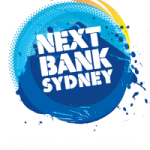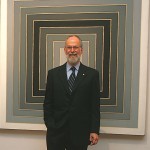HP Technology@Work 2012 – Brad Howarth
A couple of weeks ago I was lucky enough to spend some time at the HP Techology@Work conference in Sydney, the highlight was the keynote presented by Brad Howarth (http://www.linkedin.com/in/bhowarth), a renowned tech journalist who at the age of 26 was editing the technology section of BRW. He gave an inspiring talk which leveraged the analogy of waves and the impact they have to describe how technology changes come about. The underlying message is that technology changes are bigger and are happening more often than ever before.
An example he gave that really stuck was that of Kodak and how once as the pioneers of consumer photography the phrase “Kodak moment” was used by a generation to describe an opportunity to take a great photograph. Today a “Kodak moment” could equally be described as the moment when you realize you’ve created your own downfall. If you weren’t aware, Kodak invented the digital camera however were unable to quickly adapt their business model to shift away from a market that no longer required film.
Brad then described his own industry (media and journalism) and how it too was going through a change but was struggling to adapt quickly enough. Through the uptake of online news access and the redundancy of paper as tablets and other devices provide a more convenient access channel newspaper are struggling. In fact 24 out of 25 newspapers in the western world are in some form of financial stress – will they exist in another ten years time? Physical distribution makes up a large proportion of the cost to create a newspaper, if this was removed then would the business model still work? Only time will tell.
Taking this thinking and applying it to another industry, that of healthcare lots of other opportunities appear. For example the South Australian healthcare budget is increasing by 7% every year. By 2022 this will consume all of the South Australian budget. Whilst this is an extreme example there is a growing trend of increasing healthcare costs in Australia and this is accelerated by an aging population.
Brad also described the problem of physically accessing healthcare, on a recent trip to Queensland he spoke to a mother who had to spend 11 hours driving her sons to the nearest specialist who could treat their skin condition. Obviously not an ideal scenario.
There is a wave of websites being built which provide access to online healthcare, one example is www.webhealthcentre.com which has thousands of real, fully qualified doctors based in developing countries who can provide expert advice when provided with a set of symptoms or diagnostic reports. Some may consider this the realm of cheap/unqualified quasi-professionals and this may be the case until you consider second opinions from Cleveland hospital in the US. One of the top five hospitals in the US is providing an online service (http://eclevelandclinic.org/myConsultHome) whereby pathology reports can be uploaded online and within two weeks a panel of experts will assess the data and provide a view on the diagnosis.
Another scary statistic is of 100,000 people in the US dying every year from adverse drug reactions. Sceptics may dismiss this as a failure of the US health system until they see that over 18,000 people in Australia die because of the same reason. There are now websites that allow people to enter the details of the drugs they are taking and it will highlight the risks associated with such combinations.
On a more emotional level the basic need for people requiring someone to talk to who has been or is going though the same situation as them is more important than ever. www.patientslikeme.com is basically Facebook for sick people – it is especially useful for those in remote locations or with particularly rare diseases where it is unlikely that the patient would be able to meet with a fellow sufferer face to face.
Brad moved on to talk about the topic of medical tourism, raising the possibility of insurance companies incentivizing policy holders to elect for surgery in countries other than where they live. He gave an example of a replacement heart valve in the US costing roughly $200k whereas the same procedure in India would be nearer $30k even taking into account travel and other expenses. Could this become an acceptable cost reduction strategy or an opportunity for a new breed of health insurance providers?
- www.emotiv.com – headset that acts as an interface between the brain and computers. It’s particularly useful in situations where the person may have a physical limitation such as those requiring a wheelchair
- www.Eos.info – 3D printer that builds up metal components to engine quality standards, far better than forged components
- www.artec3d.com – 3D camera to quickly scan objects so that they can be re-created via a 3D printer without using CAD software
- www.vastpark.com – virtual simulations for healthcare professionals
- www.Dimensionalstudios.com – created a 3D holographic performance of Tupac at the 2012 Coachella festival (watch here http://www.youtube.com/watch?v=P_CXkvoQoGA). For those who aren’t aware Tupac was killed in 1996.
- www.Taggle.com.au – low-cost radio transmitting tags, great for tagging cattle etc
- www.Ninjablocks.com – simple open source hardware that can be controlled by the Internet. The owners of the company believe the blocks will be less than $50 by the end of year
- www.Hover-bike.com – yes, a hover bike
- www.Hardhatdigital.com.au – what would objects look like in your house before you buy them
- www.Vuzix.com – augmented reality sunglasses
Finally Brad ended with a great quote by William Gibson “The future is already here, it’s just not evenly distributed”
Tags: future



